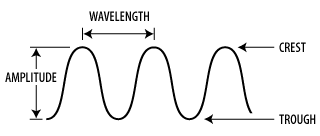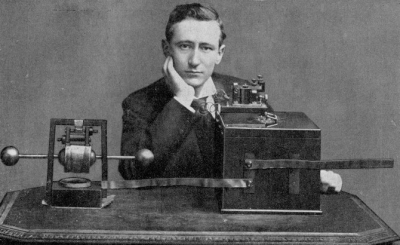
All electromagnetic waves travel at the speed of light – about 186000 miles (300,000km) per second. They are called electromagnetic because they consist of both electric and magnetic fields acting at right angles to each other. The fields leapfrog each other, giving the wave its motion like the snaking of a length of rope when it is jerked.
The height of a loop half the distance between the customer and the trough is called the amplitude. Waves can also be measured by their frequency, that is, the number passing a given point each second. The longer the wavelength, the lower the frequency.
Frequencies are measured in units called hertz, named after the German, Heinrich Hertz, who in 1888 demonstrated that electric signals could be sent through the air.
He passed a high-voltage current through a loop of wire that had a metal sphere at each end, causing a spark to jump the short space between them. At the same time, another spark jumped between the spheres of a separate, similar wire loop placed on the other side of the room.
Hertz proved that the energy transmitted from one loop to another was electromagnetic radiation, which had been predicted theoretically by a British scientist, James clerk Maxwell, in 1864.
The hertz measurement of a frequency gives a number of complete waves, or cycles, per second. Frequencies are usually expressed as kilo hertz (thousands of hertz), megahertz (millions of hertz) or gigahertz (thousand millions of hertz). Light waves are extremely short. The longest, the red, measure about 36,000 to an inch (14,000 to a centimetre) and have a frequency of around 100,000,000 MHz. Radio waves used for communication, however, range in length from about 1/25 of an inch of (1 mm) to about 18 to 20 miles (30 km), and have frequencies ranging from 10,000 Hz to about 30,000 MHz.
Picture Credit : Google





